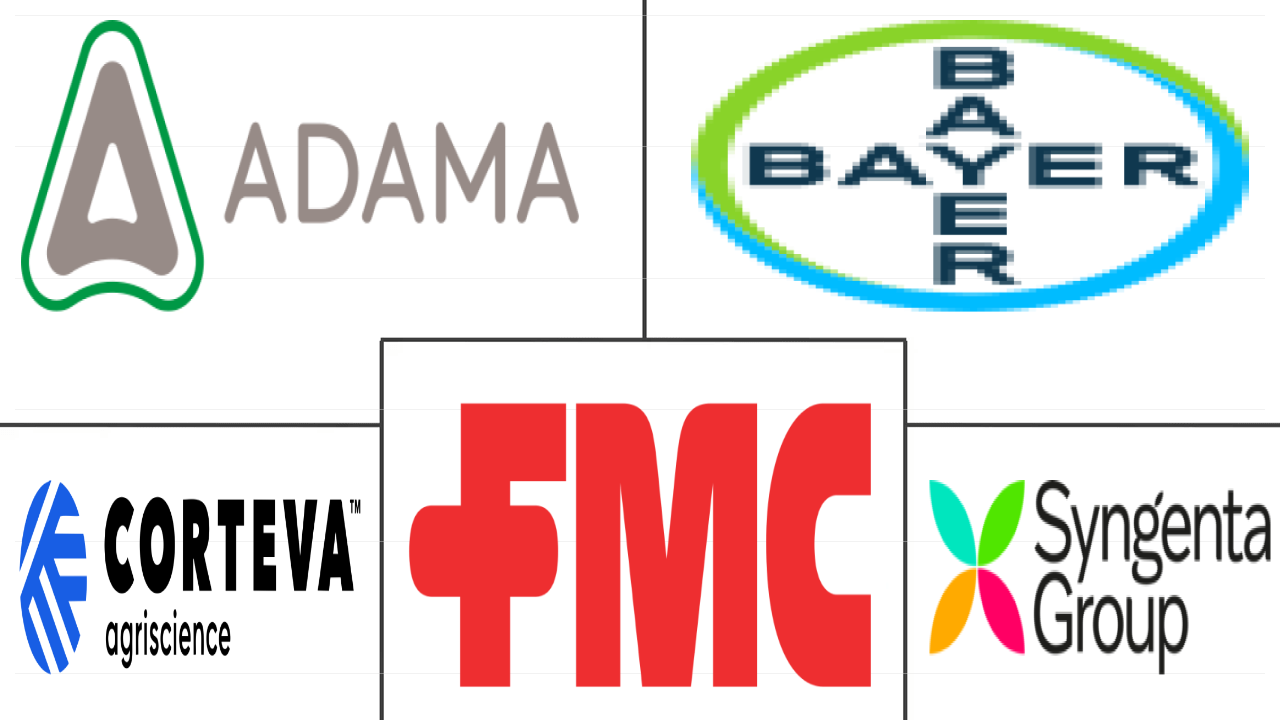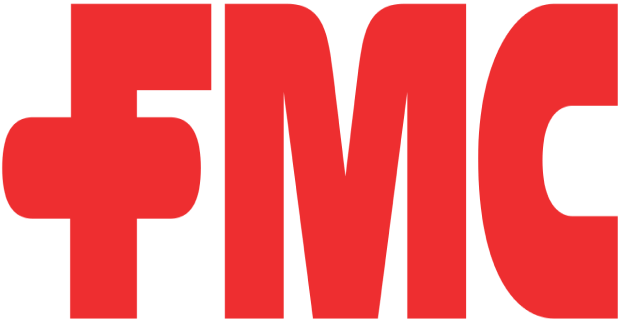Market Size of insecticide Industry
| Icons | Lable | Value |
|---|---|---|
|
|
Study Period | 2017 - 2029 |
|
|
Market Size (2024) | USD 36.70 Billion |
|
|
Market Size (2029) | USD 45.56 Billion |
|
|
Largest Share by Application Mode | Foliar |
|
|
CAGR (2024 - 2029) | 4.42 % |
|
|
Largest Share by Region | South America |
Major Players |
||

|
||
|
*Disclaimer: Major Players sorted in no particular order |
Insecticide Market Analysis
The Insecticide Market size is estimated at 36.70 billion USD in 2024, and is expected to reach 45.56 billion USD by 2029, growing at a CAGR of 4.42% during the forecast period (2024-2029).
36.70 Billion
Market Size in 2024 (USD)
45.56 Billion
Market Size in 2029 (USD)
4.27 %
CAGR (2017-2023)
4.42 %
CAGR (2024-2029)
Largest Segment by Application Mode
55.55 %
value share, Foliar, 2023
The foliar method ensures effective protection against widespread pest attacks. It allows precise targeting of insecticides to the foliage where many pests feed and cause damage.
Largest Segment by Crop Type
41.52 %
value share, Grains & Cereals, 2023
The most important grains and cereals grown globally are wheat, rice, maize, barley, rye, and sorghum, which can be affected by various pests that may hurt yields.
Largest Segment By Region
45.99 %
value share, South America, 2023
The insecticide market in South America is witnessing significant expansion due to the need to manage insect pests and effectively minimize crop losses.
Fastest-growing Segment by Country
6.45 %
Projected CAGR, France, 2024-2029
Insect pests are a major threat to France's agriculture as climate change in the country favors pest infestation, so farmers rely on insecticides.
Leading Market Player
9.87 %
market share, FMC Corporation, 2022

FMC Corporation and UPL Ltd have formed a strategic partnership to expand growers' access to Rynaxypyr active and the manufacturing capacity for this vital molecule.
The rising pest pressure and the need to protect crops from damaging insects are driving the demand for insecticides
- Insecticide use is increasing through different application modes to protect crops from insect pests. In 2022, the foliar segment held the major share, accounting for 4.4% of the overall insecticide market. This could be attributed to increasing pest pressure and its effectiveness in controlling insects, rapid action, and targeted control.
- In terms of value, the seed treatment method in the global insecticide market is expected to record a CAGR of 4.6% between 2023 and 2029. This method is being majorly adopted because it protects against many pests that attack seeds or seedlings, such as aphids, thrips, wireworms, and beetles, at the very beginning of a crop's life cycle.
- Soil treatment in the insecticide market is expected to record a 4.3% CAGR between 2023 and 2029. The main pests affecting the root growth of economically significant crops such as wheat, soybean, oil palm, cocoa, and coffee are slugs, wireworms, fungi gnats, and soil mealybugs. Therefore, to protect crops from these pests, the demand for insecticides in terms of soil treatment is expected to increase.
- Farmers are becoming more and more aware of the chemigation method. By combining insecticide application with irrigation, farmers can save time and labor, making it a convenient choice for farmers managing large-scale agricultural operations. Due to these factors, the insecticide market value in this application mode is projected to record a 3.8% CAGR during the forecast period (2023-2029).
- The global insecticide market in these application methods is expected to witness significant growth and is projected to record a 4.4% CAGR from 2023 to 2029.
The expansion of cropland areas with changes in climate conditions is contributing to the growth of the market
- The increase in global population and the need for higher food production have led to the expansion of agricultural production, which, in turn, boosted the demand for insecticides to protect the crops from damaging pests. During the historical period (2017-2022), the insecticide market grew by USD 6,142.1 million.
- South America was one of the major regions in agriculture production, with a 4.7% market value in 2022. The vast production of soybeans, corn, sugarcane, and other crops creates a significant demand for insecticides to manage pests effectively. The rise of infestation of insects such as southern armyworm (Spodoptera eridania) has driven the growth of the market.
- Asia-Pacific holds the second-largest insecticide market value share, and the market is anticipated to grow fastest in the region, registering a CAGR of 4.8% during the forecast period (2023-2029). Insect pests that could damage crops are spreading due to the changing climate. Consequently, the demand for insecticides is expected to rise as they are efficient tools for addressing these pests and ensuring crop productivity.
- North America is projected to register a CAGR of 4.8% during the forecast period (2023-2029). The need to protect the crops, coupled with the introduction or spread of invasive pests, could lead to increased demand for insecticides to manage and control these new threats.
- However, Europe and Africa have a substantial agricultural sector and play a vital role in the global insecticide market. These regions are projected to register CAGRs of 4.1% and 3.3%, respectively, during the period.
- The global insecticide market is projected to register a CAGR of 4.6% during 2023-2029. The rapidly expanding agriculture sector with a changing climate is driving the growth of the market.
